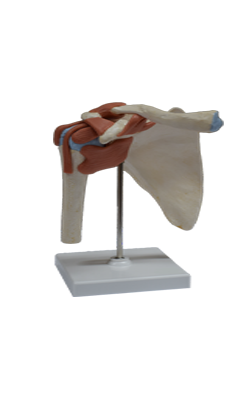Main Model

Posterior : Acromioclavicular ligament

Ligaments of Acromioclavicular Joint
The acromioclavicular ligament is a fibrous
band extending from the acromion to the clavicle that strengthens the
acromioclavicular joint (AC joint) superiorly. However, the integrity of
the joint is maintained by extrinsic ligaments, distant from the joint
itself.
The coracoclavicular ligament is a strong pair of bands that unite the coracoid process of the scapula to the clavicle, anchoring the clavicle to the coracoid process. The coracoclavicular ligament consists of two ligaments, the conoid ligament and the trapezoid ligament, which are often separated by a bursa. The vertical conoid ligament is an inverted triangle (cone), which has its apex inferiorly where it is attached to the root of the coracoid process. Its wide attachment (base of the triangle) is to the conoid tubercle on the inferior surface of the clavicle. The nearly horizontal trapezoid ligament is attached to the superior surface of the coracoid process and extends laterally to the trapezoid line on the inferior surface of the clavicle. In addition to augmenting the acromioclavicular joint (AC joint), the coracoclavicular ligament provides the means by which the scapula and free limb are (passively) suspended from the clavicular strut.